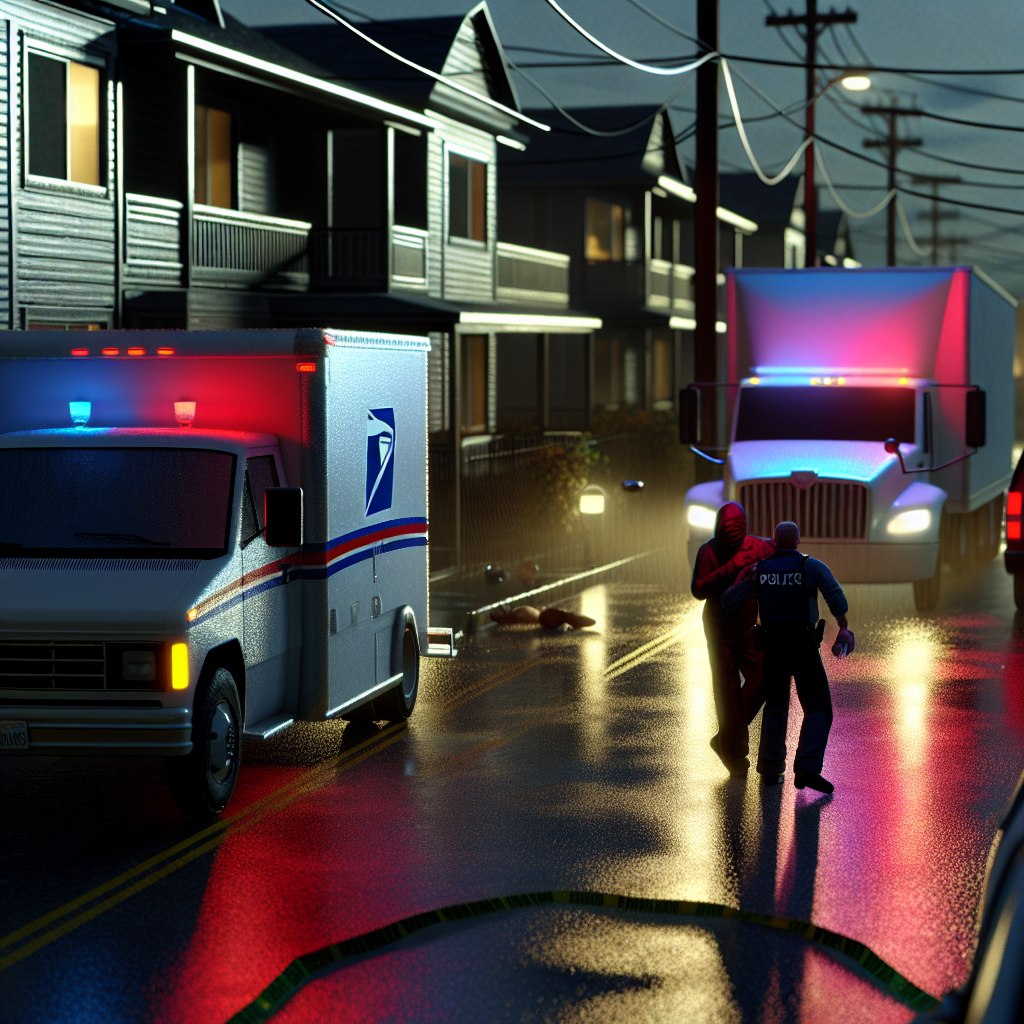A U.S. Postal Service letter carrier was shot mid-route on Friday, October 3, at a large apartment complex just off Everett Mall Drive in Everett, Washington. Police say the suspected shooter — a package delivery driver — was taken into custody at the scene shortly after officers were dispatched around 12:50 p.m. to the West Mall Place Apartments. Investigators emphasized there was no ongoing threat to the public and the probe is active.
Postal Inspection Service spokesperson John Wiegand said the carrier was confronted while working in the building and that a brief altercation preceded the shot, which struck the carrier in the face. The victim was transported to Harborview Medical Center in Seattle and is alive, according to Wiegand. Authorities have not released additional medical details or the suspect’s identity.
Neighbors told local media the episode unfolded steps from a police station and in a community where serious violence is uncommon. Officers and medics responded within minutes, and the delivery driver was detained without further incident, police said.
FreightWaves first highlighted the incident for an industry audience; subsequent local reporting from Seattle-area outlets confirmed the time, location and that a package driver is the suspect. Officials have not detailed potential charges as of Sunday, October 5.
Why it matters for carriers and fleets: this shooting didn’t happen on a highway shoulder or at a freight dock — it happened inside a dense, shared delivery node where multiple carriers converge and space is tight. Cluster mailrooms, lobby mailbox panels and apartment parcel rooms routinely funnel USPS, parcel contractors and ride-along couriers into the same narrow window. Without clear protocols, small disputes — who gets right-of-way at a locked mailroom, who can pass while boxes are open, where to stage carts — can escalate fast. For last-mile operators, the risk isn’t only physical harm to employees; it’s legal exposure, operational shutdowns on a route, and immediate reputational blowback that can jeopardize property access and client contracts.
Operational takeaways for delivery managers and DSP owners: reinforce site-specific playbooks at multi-tenant stops. Carriers should pause entry while USPS is actively working open cluster boxes and treat posted mailroom restrictions as hard red lines. Dispatch should route and time multi-carrier buildings to reduce overlap, and equip drivers with de-escalation steps (back out, notify dispatch, call property management or local non-emergency police line) when confronted with blocked access. Apartment managers can help by posting uniform signage and designating neutral staging space near mailrooms to keep foot traffic and carts separated. These are low-cost controls that reduce friction points before they turn into incidents.
For the broader trucking sector, the episode is a reminder that the last 100 feet is now one of the riskiest parts of the supply chain. As parcel density grows and more work is outsourced to networks of small contractors, uniform rules at shared delivery touchpoints become as important as ELDs and dock SOPs. Companies that move quickly to codify “right-of-way” inside residential delivery spaces, document those expectations with shippers and property owners, and train their drivers accordingly will be better positioned to protect people, preserve route throughput and limit liability when law enforcement and federal inspectors get involved after an incident.
Sources: FreightWaves, FOX 13 Seattle, KIRO 7, HeraldNet
This article was prepared exclusively for TruckStopInsider.com. Republishing is permitted only with proper credit and a link back to the original source.




